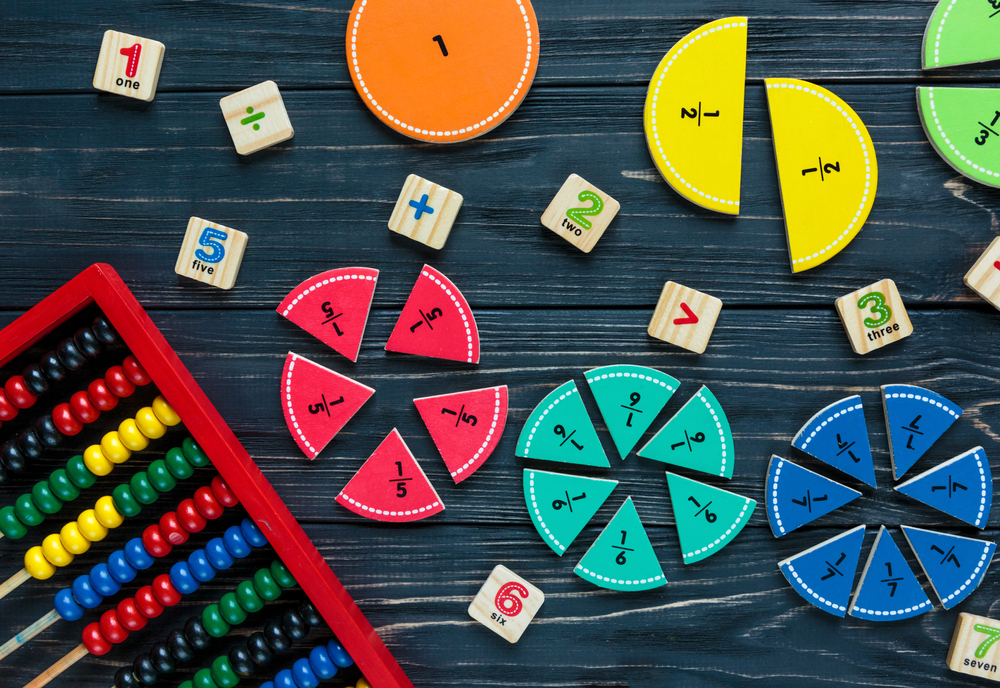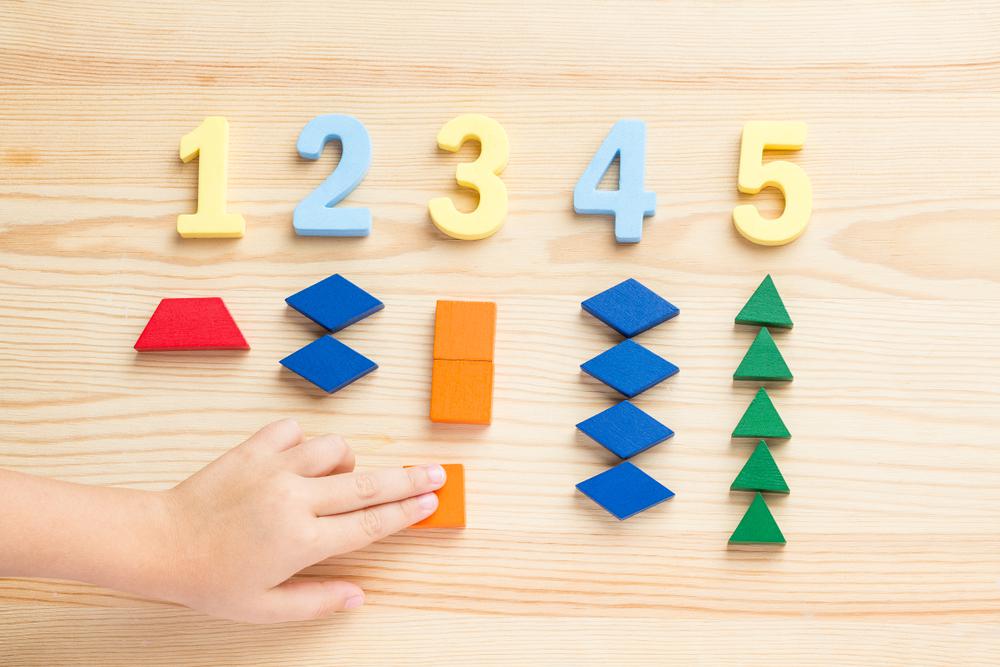Analog clock reading Math Worksheets for Ages 4-9
4 filtered results
-
From - To
Boost your child's math skills with our engaging Analog Clock Reading Math Worksheets designed for ages 4-9! These printable worksheets provide fun, interactive activities that help young learners master the concept of telling time. With a variety of exercises, kids will practice reading hours and minutes on the analog clock, reinforcing their understanding through colorful visuals and relatable scenarios. Perfect for home or school use, our resources cater to different learning styles, making clock reading enjoyable while ensuring important foundational skills. Help your little ones develop confidence in telling time with our easy-to-use worksheets – perfect for shaping future mathematicians today!
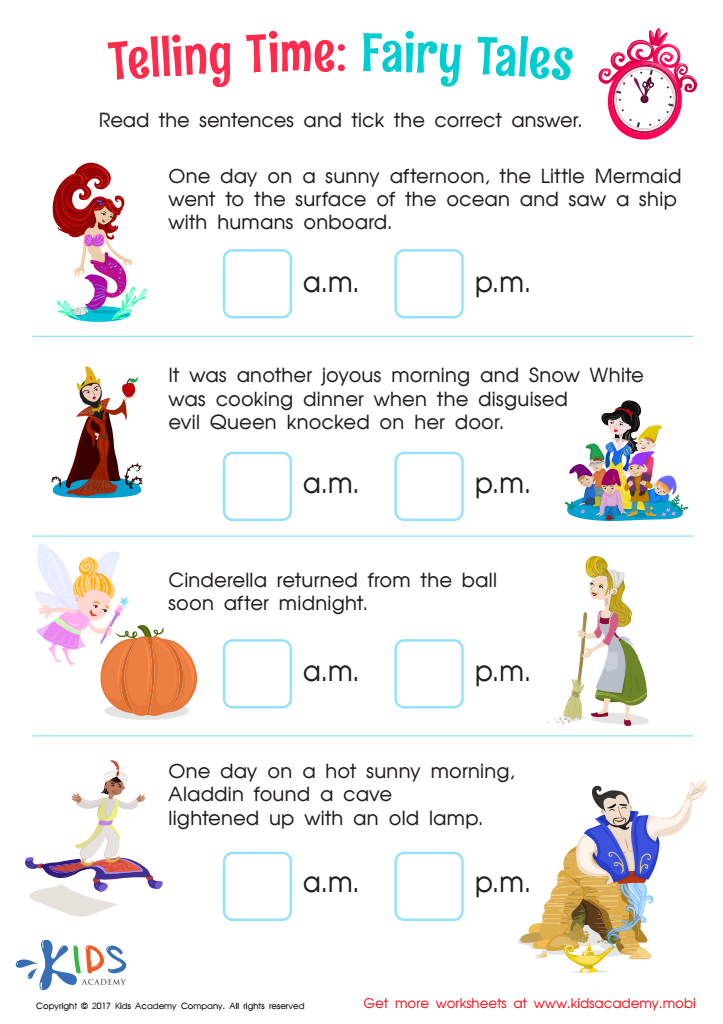

Telling Time: Fairy Tales Worksheet
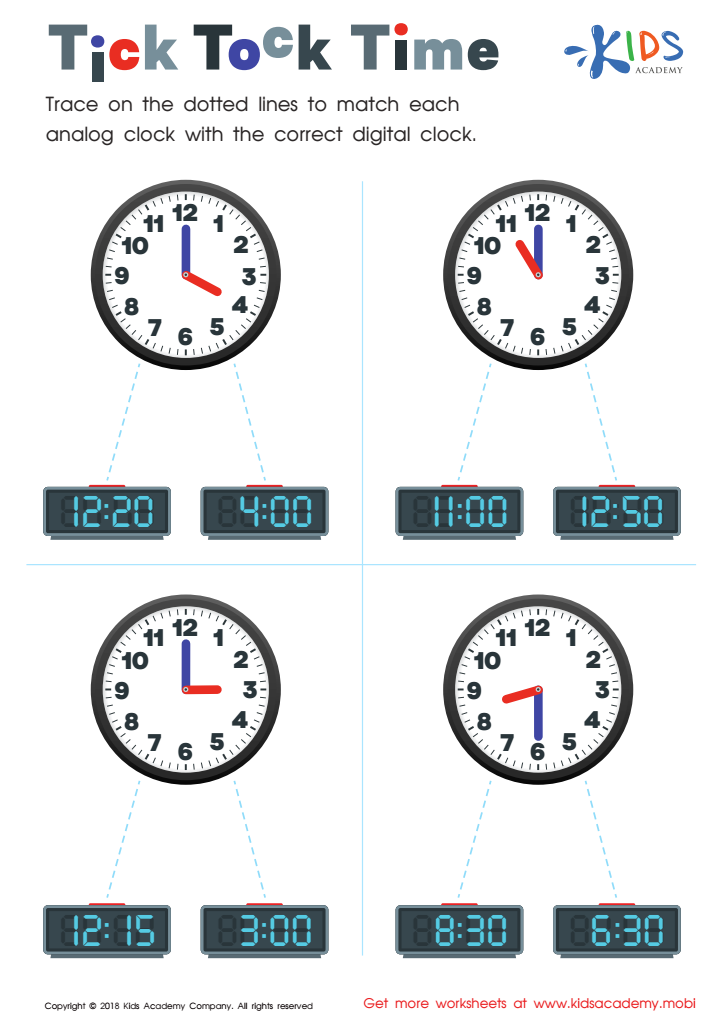

Tick Tock Time Worksheet
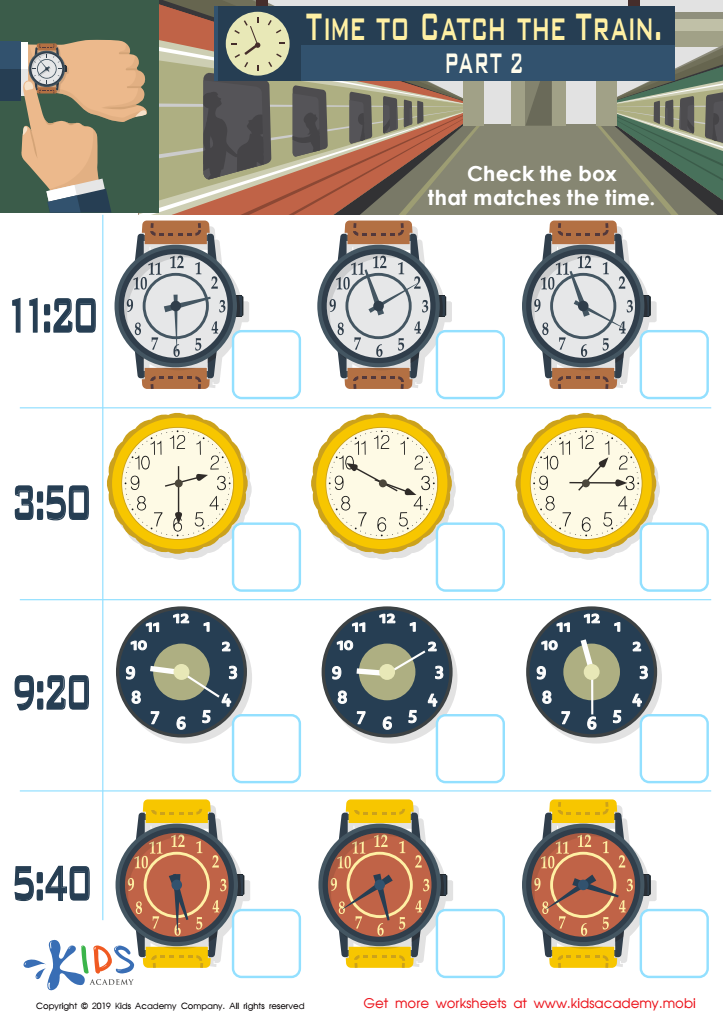

Time to Catch the Train Part 2 Worksheet
Learning to read an analog clock is a fundamental math skill crucial for children aged 4-9. Early exposure to analog time helps develop number recognition, spatial awareness, and problem-solving skills. Unlike digital clocks, analog clocks encourage children to understand the concept of time in a visual and tangible way. This sparks curiosity and promotes critical thinking as they learn to interpret minutes, hours, and the relationships between them.
Moreover, mastering analog clock reading lays a strong foundation for future mathematical learning, including fractions and division, as children understand the division of the clock face into segments for each hour and minute. Additionally, this skill aids in the development of self-regulation and time management, essential for daily routine and transition from one activity to another.
Parents and teachers invested in their children's overall development should prioritize analog clock reading, as it enhances cognitive understanding and empowers children to navigate their environment effectively. By fostering this skill, adults contribute to building confidence and independence in children, preparing them not just for academic success, but for life skills they will rely on as they grow.
 Assign to My Students
Assign to My Students

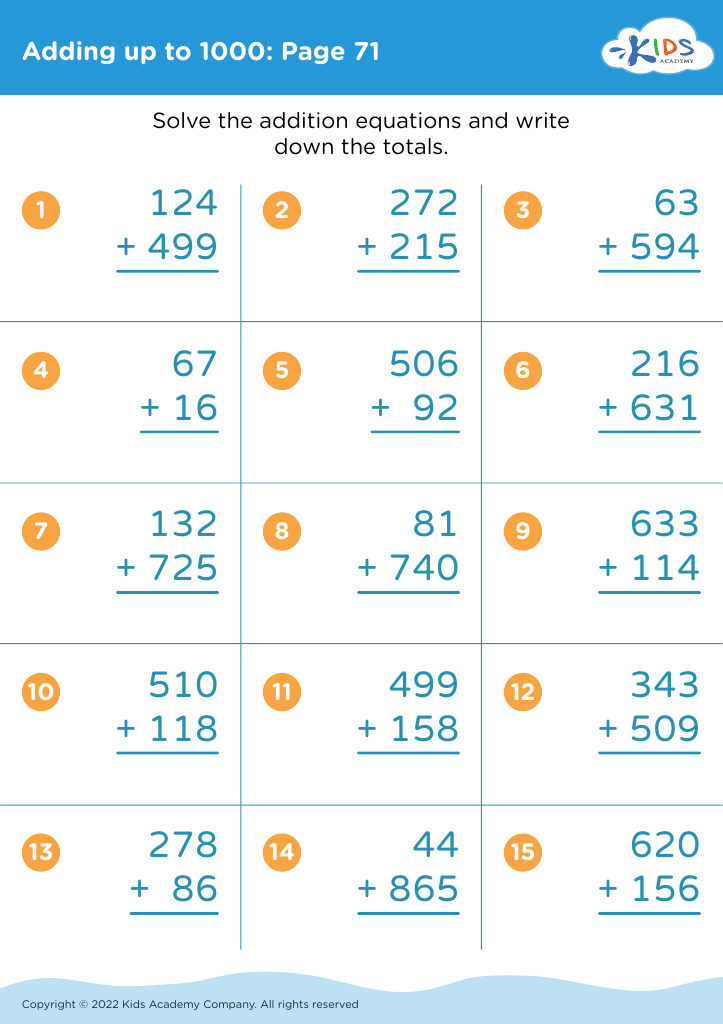



.jpg)

